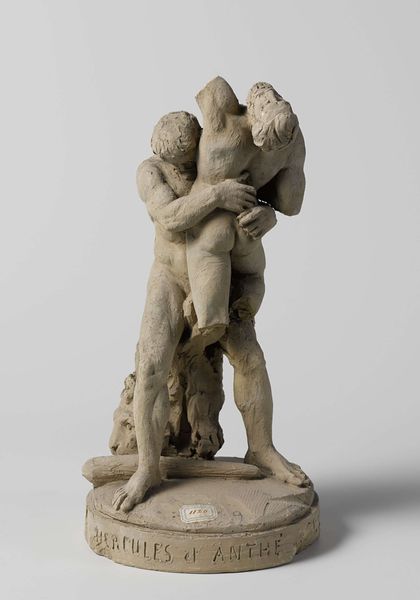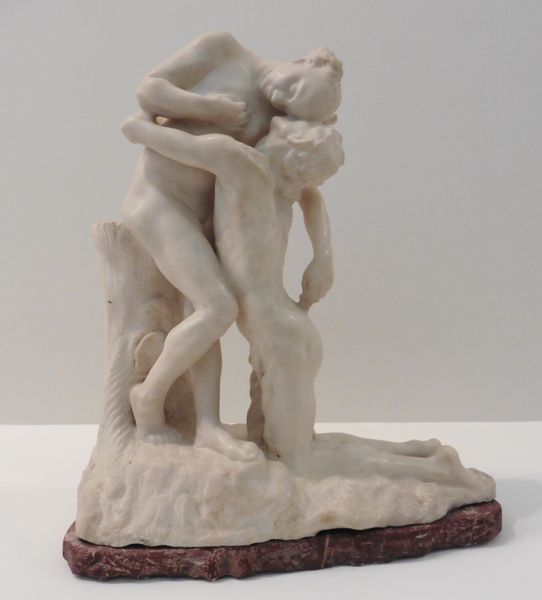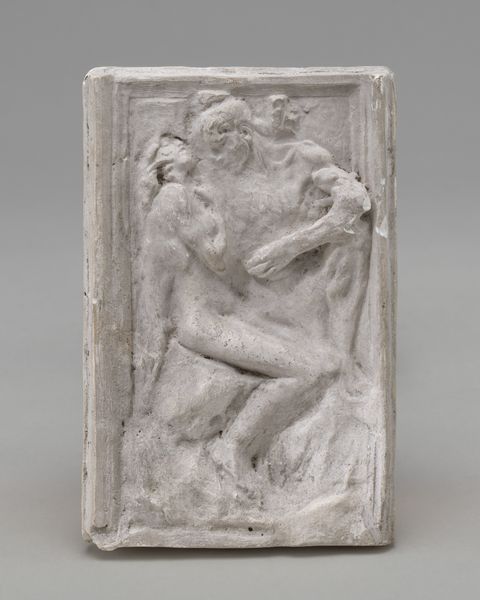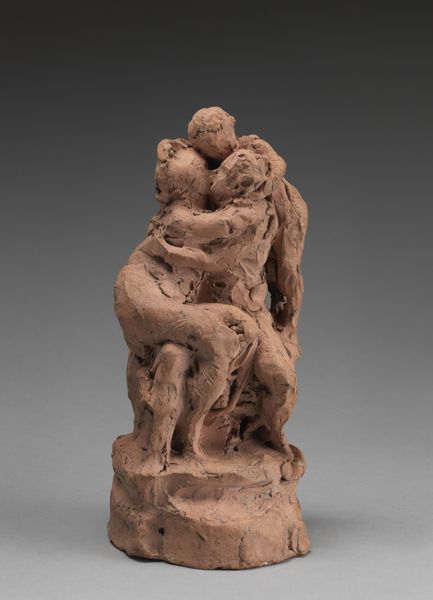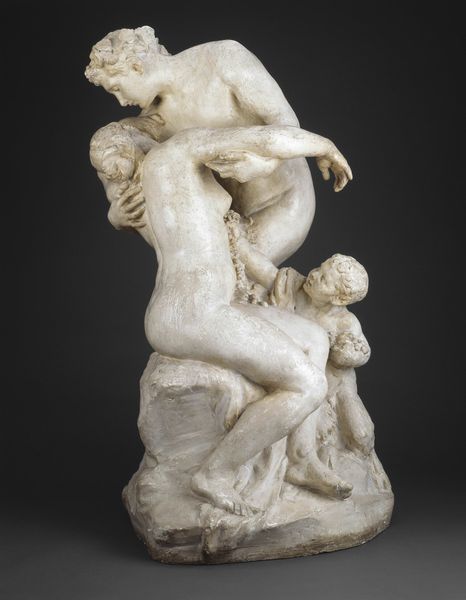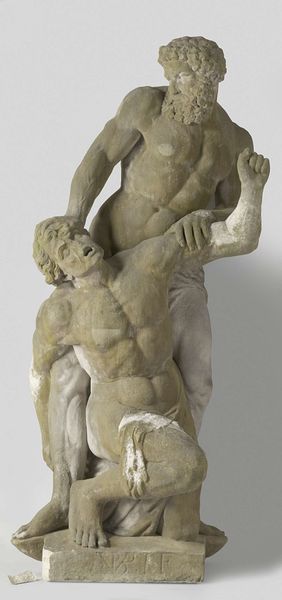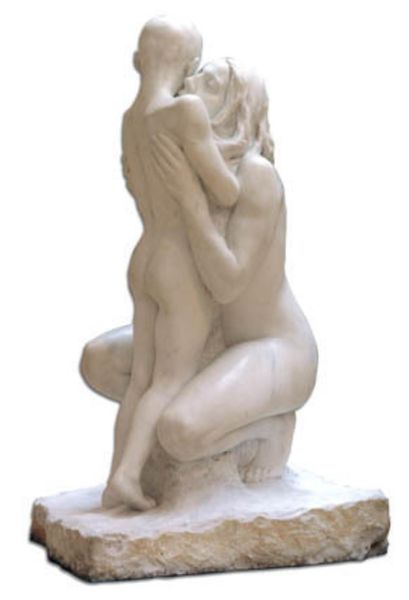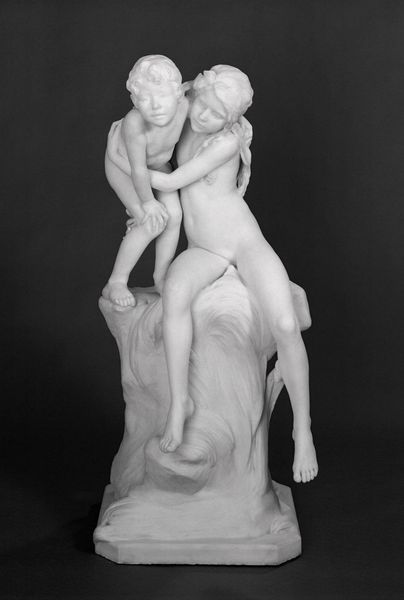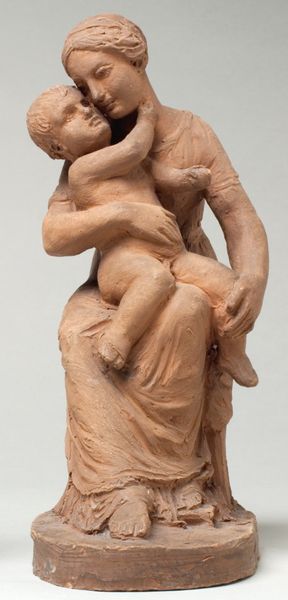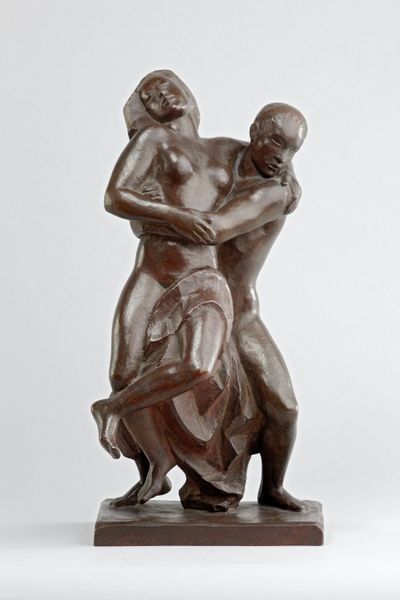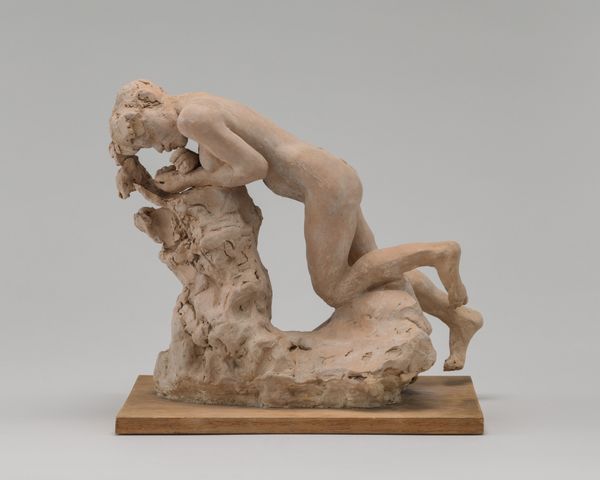
Dimensions: object: 1372 x 457 x 228 mm
Copyright: CC-BY-NC-ND 4.0 DEED, Photo: Tate
Editor: Here we have Eric Gill's "Ecstasy," a stone carving. The figures seem locked in a tight embrace, a raw expression of emotion. I'm curious, what’s your take on this work, especially considering the time it was created? Curator: Gill's "Ecstasy" is interesting within the context of early 20th-century sculpture. The direct carving technique, while seemingly simple, was a deliberate rejection of industrial processes. How does this sculpture engage with ideas about sexuality and the body, particularly considering the social and religious climate of the time? Editor: It seems almost defiant, a public display of intimacy. Curator: Precisely. Gill was deeply religious, yet his work often challenged conventional morality. This sculpture serves as a social statement, inviting a conversation about the place of the body and passion in society. Editor: That adds another layer to my understanding; thanks!
Comments
Join the conversation
Join millions of artists and users on Artera today and experience the ultimate creative platform.
tate 7 months ago
⋮
This relief is a direct carving. Gill worked directly in stone rather than producing a clay model later carved by a technician. He was influenced by the simplified forms of early religious sculpture in Europe and India and attended lectures on ancient Indian culture at the London India Society. Sex was a major theme in Gill’s art. This private work was not exhibited in his lifetime. For people who know Gill’s biography, its subject matter invites questions about his sexual abuse and obsessions. There is speculation that the embracing models were Gill’s younger sister Gladys and her husband, Ernest Laughton. Gill had an incestuous relationship with his sister. Gallery label, October 2020
